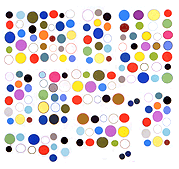Where did the conventional Washington wisdoms emerge that (i) government planning is bad and (ii) inflicting pain on the lower classes (austerity) is a sad economic necessity? We're not talking here about Soviet 5 year plans but the rather more successful Roosevelt policies of social insurance, regulating finance, etc.
Writer Philip Pilkington traces the horror of planning, any planning to economist turned propagandist Friedrich Hayek, a darling of the libertarian right. Hayek argued that central planning led to German fascism when in fact it was WWI reparations that caused hyperinflation and the austerity measures imposed by the Weimar government (rolling back central aid mechanisms) that led to mass pain and Hitler's rise. Pilkington quotes Mark Ames on how the story changed:
Von Hayek and his fellow Austrian aristocrats who were forced to flee from the fruits of their economic programs, did a complete revision of history and retold that same story as if the very opposite of reality had happened. Once they were safely in England and America, sponsored and funded by oligarch grants, hacks like von Mises and von Hayek started pushing a revisionist history of the collapse of Weimar Germany blaming not their austerity measures, but rather big-spending liberals who were allegedly in charge of Germany’s last government.
According to Pilkington, Hayek's ideas were discredited as economics so after the 1930s he turned to politics, attracting others who shared his delusions about planning evils vs the value of the "free market." Despite the success of the Roosevelt-era social programs these ideologues have been so effective as propagandists that you are considered nuts in Washington now if you don't mouth truisms such as "deficits are bad" and "the safety net is broken." The herd mentality among our thought leaders and their susceptibility to Ayn Randian nonsense is quite an amazing thing to witness.
